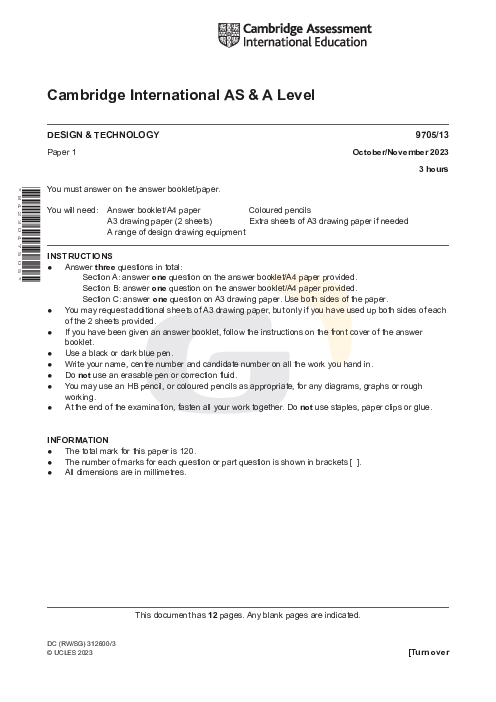Design & Technology 9705/13 Oct Nov 2023
Laura Bellini
1. Sketch-based problem-solving: design improvements for objects including attachment mechanisms for rotating hands, creating nets for coffee tables, and ergonomic designs for food mincers.
2. Materials and processes: use of materials like plywood, acrylic, foamboard, and corrugated card; waterproofing methods; mass production techniques for plastic shapes; and related safety precautions.
3. Engineering and design analysis: identification of functional and structural issues in products such as sunshades, birthday cake packaging, and wall-mounted lamps; modifications to improve design and usability.
4. Risk and impact assessment: importance of conducting risk assessments in manufacturing processes and considerations for safety, efficiency, and compliance.
5. 3D modeling and visualization: development of detailed sketches and pictorial renderings for solutions such as adjustable mirror stands, freestanding slot-together robots, and modular stage sets with movable components.
6. Integration of features: incorporating multi-functional designs like adjustable mirrors, integrated shoe racks, leaflet holders, and lighting control systems with independent settings and dimming capabilities.
7. Advanced design tasks: slot-together models, mechanical systems for opening/closing curtains, raising/lowering platforms, and creating durable promotional structures using foamboards or plywood.
See More Paper 1 10 months ago
Design & Technology (9705) Subject directory
All resources in one place
Related Past Papers
Related Tutorials
Crash report
